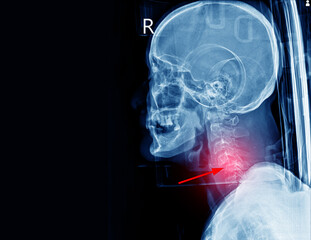CASE STUDY REFLECTION BLOG POST – Cervical facet joint irritation
The purpose of this case study is to assist our graduates to fully reflect on a client that they have seen throughout the week. This will also form part of information that we can distribute to clients where they can read up on real life cases where we have been able to help clients and allow them to be pain free! Clients are refered to as Mr.X/Ms.X to keep their privacy.
Cervical facet joint irritation
Section 1: About your client and how you diagnosed the condition (think about how they presented, what
subjective and objective information did you gather to help you diagnose?)
Client presented with ongoing neck pain on their right side of the upper neck.
On observation, the client had a large kyphosis of the thoracic spine, requiring greater cervical extension to compensate and achieve a neutral eye level. Sports including AFL football and basketball leave lingering discomfort. Both of these sports require cervical
extension as the ball is consistently airborne, pairing this with compressive loads, landing in cervical extension creating further irritation at the joint. The client also had a relieving position, utilised every 10-20 seconds within the consultation of a forward chin poke and left rotation.
Section 2: Your diagnosis and about the condition (what is your possible diagnosis?)
Possible diagnosis:
Cervical facet joint irritation
Pathophysiology background:
Facet joint disease is a condition in which the facet joints (also termed zygapophyseal joints) of the spine become a source of pain. This can be due to repetitive stresses including postures or repetitive lifting, or can also be caused due to trauma such as whiplash.
Section 3: Differential Diagnosis (what is another condition to consider and why?)
Whiplash, Discogenic, suboccipital muscles – location and symptom provocation
Section 4: Treatment (what did you do and why?)
Treatment began with manual treatment to open and provide relief to the affected joint. This was paired with massage to surrounding tissue.
Some exercises to the deep neck flexors allows further facilitation to gap the affected joint.
As the client was very kyphotic (slouched/ rounded posture) through their mid back, thoracic mobility interventions were also implemented.
Section 5: Plan (where to go from here? How many sessions might they need? What’s the goal?)
Treatment then consisted of improving thoracic mobility, and increasing strength and stability of thoracic extensor as well as scapula retraction muscle groups to facilitate a less kyphotic thoracic posture. This, in turn requires less cervical extension to compensate. Less cervical extension means less compression of the affected joints and therefore relief of pain.

